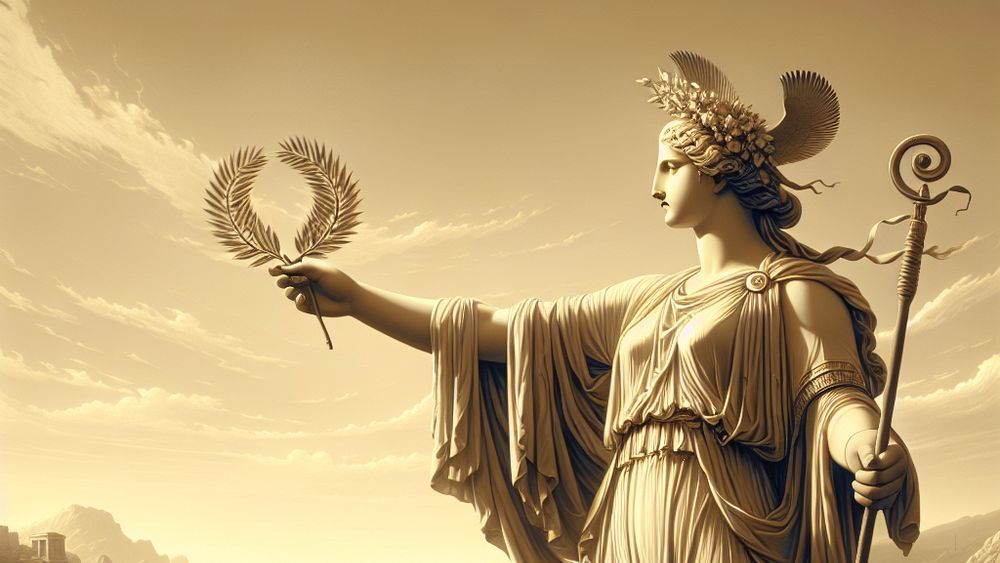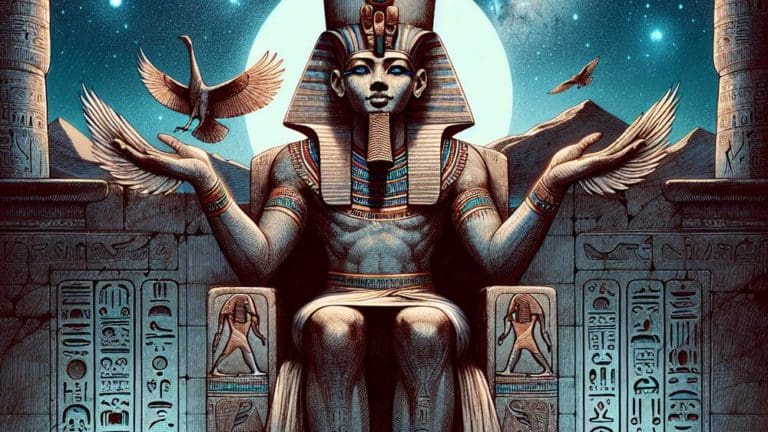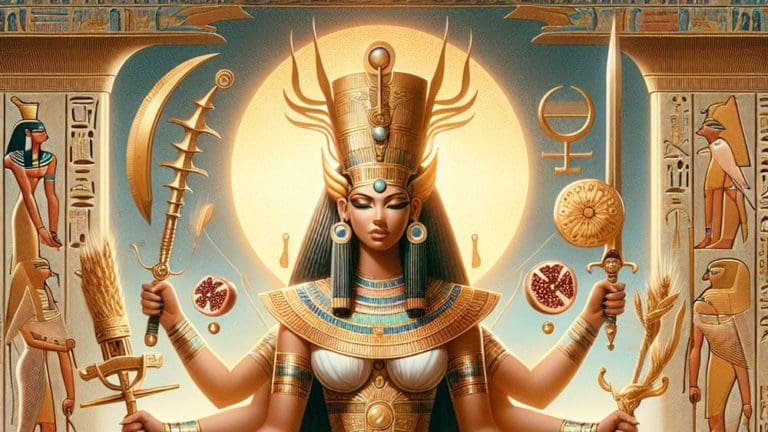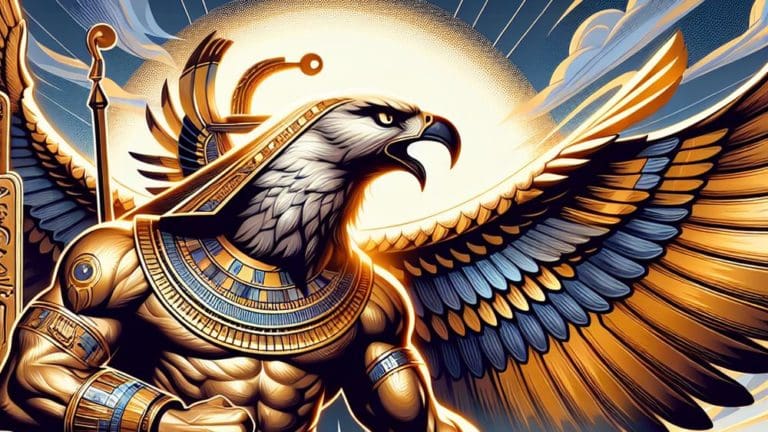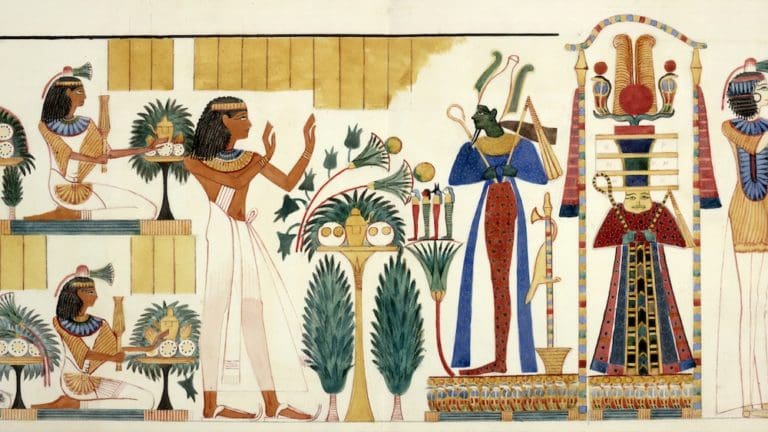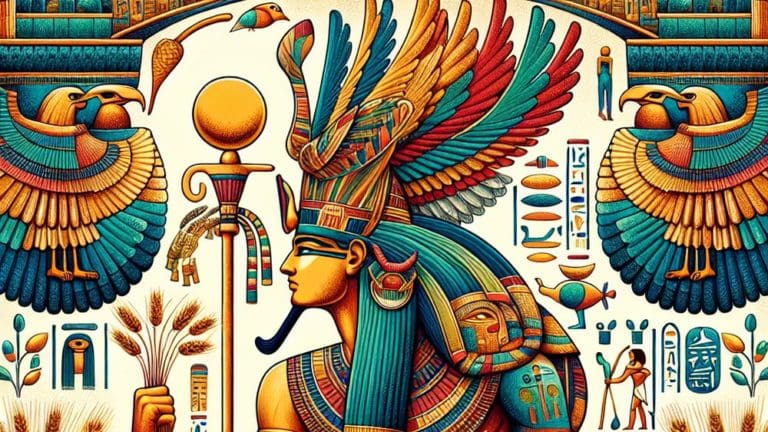Nike: Greek Goddess Of Victory In Mythology and Art
Nike: Greek Goddess Of Victory In Mythology and Art
Imagine diving deep into the heart of ancient Greek mythology, where gods and goddesses rule the skies, the sea, and everything in between. That’s where we’ll find Nike, not just a brand, but a powerful goddess symbolizing victory. Stepping back in time, we journey through tales that have shaped cultures and sparked imaginations around the globe.
Key Points:
- Nike is the Greek goddess of victory in mythology and art.
- Nike is the personification of victory, born from the titan Pallas and the river Styx.
- Nike is associated with symbols like wings, wreaths, and chariots in ancient myths.
- Nike was honored in various sacred sites and temples across Greece.
- Depictions of Nike in art and sculpture highlight her as a swift and victorious goddess.
- Nike’s image evolved over time, adapting to changing cultures and artistic styles.
- Nike’s influence extends to modern culture through the global sports brand named after her.
Greek mythology offers us a plethora of deities each embodying human emotions and natural phenomena; however, Nike stands out. She’s not just any goddess; she’s the divine personification of victory itself. Whether in the heat of battle or during peaceful competitions, invoking Nike was seeking the ultimate win. So, let’s lace up our sandals and soar into the realm where Nike reigns supreme.
The Origins and Family of Nike
Tracing back to the titanic roots of Greek mythology, Nike’s origins are as divine as they are powerful. Born out of the union between the titan Pallas and the river Styx, she stands as a symbol of triumph.
The Birth of Nike and Her Divine Lineage
In the mystical terrains of Greek myths, Nike was born a titaness, a result of the powerful alliance between her father, Pallas, and her mother, the river Styx. This divine lineage anchored her role in the ancient world as a force of victory.
- Pallas (Father)
- Styx (Mother)
- Titaness (Nike’s Status)
- Victory (Her Domain)
Her birth was no ordinary event; it symbolized the fusion of strength and endurance. Nike emerged as not just any goddess, but as the embodiment of victory, with wings to soar above the battlefields and influence the tides of war and competition alike.
Nike’s birth symbolized the fusion of strength and endurance, establishing her as the embodiment of victory with the power to influence war and competition.
Siblings of Nike: Allies in Victory
Stepping into the limelight alongside Nike were her dynamic siblings: Kratos (Strength), Bia (Force), and Zelos (Zeal). Together, they formed an unstoppable team embodying crucial elements of conflict and competition.
- Kratos (Strength)
- Bia (Force)
- Zelos (Zeal)
Each sibling had a distinct role, yet their mutual goal was to ensure the victory of their allies. Nike and her siblings weren’t just family; they were a divine force on the battleground, influencing outcomes and spreading their wings in the name of victory.
Nike’s Significance in Greek Mythology
Diving into the heart of myths, Nike’s significance is undeniably grandeur. Her association with victory in war and peace marked her as an essential figure among the gods and humans alike.

Nike’s Role and Symbols in Ancient Myths
In the tapestry of Greek mythology, Nike held a crucial role as the goddess of victory. Whether guiding the outcomes of wars or athletic competitions, her presence was sought after for a guaranteed win.
- Wings (Freedom and Victory)
- Wreath (Honor and Glory)
- Chariot (Symbol of Triumph)
Her symbols, intricately woven into stories and art, represent her sway over mortal and divine victories. With her wings, she flew freely, bringing victory; the wreath represented the honor she bestowed upon the victors, and her chariot was a clear representation of triumph over adversaries.
Nike’s symbols, including wings, wreath, and chariot, embody victory, honor, and triumph in Greek mythology.
The War of the Titans and Nike’s Valor
In the heart-pounding Titanomachy, a colossal war between gods that shaped the cosmos, Nike fought valiantly alongside Zeus and the Olympians. Her valor was unmatched, playing a pivotal role in the Olympians’ victory over the Titans, forever changing the course of Greek mythology.
In battle, Nike’s wings were not just symbols of victory but also emblems of the swift justice she could bring down upon her foes. Her determination and strength were crucial in tiling the scales in favor of Zeus.
Post-war, Nike didn’t just vanish into the annals of history. She was honored and revered, immortalized at the side of Zeus, symbolizing the eternal victory of the gods over their adversaries. Her legacy was carved in stone and story, forever a testament to her role as the divine bringer of victory.
Sacred Sites and Temples Dedicated to Nike
Nike, the Greek goddess of victory, was celebrated across Greece, but a few sacred sites really stood out. She was worshipped fervently, with the belief that she could bring victory and honor to both individuals and city-states alike.
The most famous temple dedicated to Nike is the Temple of Athena Nike on the Acropolis in Athens. Another notable site is the sanctuary of Olympia, where Nike was honored alongside Zeus, reflecting her critical role in the pantheon of gods.
| Location | Site Name | Significance |
|---|---|---|
| Athens | Temple of Athena Nike | A key worship site, showcasing Nike’s importance in Athens |
| Olympia | Sanctuary of Olympia | Home to the Altis, where Nike was worshipped along with Zeus |
| Delphi | Sanctuary of Delphi | Nike was celebrated for her oracular powers |
| Samothrace | Sanctuary of the Great Gods | Nike was venerated as a protector of sailors and sea-faring missions |
Each of these sites holds a treasure trove of stories, artifacts, and ruins that offer a glimpse into how Nike was revered across the ancient Greek world.
Nike, the Greek goddess of victory, was revered across ancient Greece, with key sacred sites like the Temple of Athena Nike in Athens and the Sanctuary of Olympia highlighting her significance in bringing success and honor to individuals and city-states.
Depictions of Nike in Art and Sculpture
Art and sculpture were primary mediums through which the ancient Greeks honored their deities, and Nike was no exception. Her representations in art captured her essence as the swift, victorious goddess she was.
From grand statues that aimed to capture her dynamism, to smaller votive offerings found at her temples, the range of artwork dedicated to Nike is astonishing. Each piece helps to piece together the vast tapestry of how Nike was visualized and celebrated throughout Greek history.
Iconic Statues: Nike of Samothrace and Nike of Olympia
The Nike of Samothrace and Nike of Olympia stand out as two of the most breathtaking representations of the goddess. Both statues depict Nike with an incredible sense of motion, as if she is descending from the heavens to announce a victory.
- Nike of Samothrace: This statue is famed for its dramatic portrayal of Nike, with wings outstretched and clothes clinging to her body as if swept by a fierce wind. It captures the goddess’s dynamic essence.
- Nike of Olympia: This sculpture shows Nike at a more serene moment, likely as she is about to crown a victor. Though less dramatic than the Samothrace statue, it beautifully showcases her role in celebrating success and valor.
These statues not only reveal the skill and creativity of ancient Greek sculptors but also highlight the importance of Nike in the collective consciousness of the people.
Nike in Ancient Greek Pottery and Coinage
Pottery and coinage served as everyday reminders of the gods’ influence in the lives of the ancient Greeks, and depictions of Nike were widespread in these mediums. On pottery, she is often shown as a winged figure, flying above various scenes of victory and triumph, emphasizing her role as the bringer of success.
Coins, especially those minted in cities that had experienced significant victories, frequently featured Nike. She was either depicted in full form or, more commonly, as a symbol – a pair of wings or a palm of victory. These images served not just as a celebration but also as a form of propaganda, reminding the citizens of the gods’ favor and the benefits it could bestow.

The Evolution of Nike’s Image Through Time
The representation of Nike has evolved significantly over the centuries. Initially, in ancient Greek art, Nike was depicted as a fully fledged goddess with wings, symbolizing her ability to fly through the Greek skies, announcing victory. However, as the centuries passed, her image became more nuanced.
In the Hellenistic period, for example, artists began to focus more on the human aspects of the goddess, portraying her with a range of emotions and in various settings that underscored her divine intervention in human affairs. By the Roman era, Nike had become Victoria, merging with the Roman concept of victory but still retaining her essence as a powerful, triumphant force.
The ability of Nike’s image to adapt to changing cultures and artistic styles highlights her enduring importance throughout antiquity and beyond. It’s a testament to her universal appeal as a symbol of victory.
Nike’s representation has adapted over time, showcasing her universal appeal as a symbol of victory that transcends cultures and artistic styles.
List of All Greek Mythology Gods
Diving deep into Greek mythology opens up a world of divine complexities and fascinating stories. To get a comprehensive look at the multitude of gods and goddesses that inhabit these ancient myths, check out this awesome list of all the Greek gods. It’s an easy way to get acquainted with the entire pantheon, from Zeus to Aphrodite, and of course, our beloved victory-bringer, Nike.
Each god and goddess brings to the table their own unique stories, powers, and quirks that have captivated the human imagination for centuries. No matter if you are a hardcore mythology nerd or just dipping your toes into this rich world, you’ll find this list easy to follow and super informative.
FAQs
1. What are the main symbols associated with Nike?
The main symbols associated with Nike include wings and a palm branch. These symbols highlight Nike’s role as a goddess of victory, emphasizing her swift nature to deliver triumph.
2. How was Nike worshipped in ancient Greece?
Nike was worshipped in ancient Greece through sculptures and offerings at temples. Her divine association with victory made her an important deity during times of war and athletic competitions.
3. Can you name a famous temple dedicated to Nike?
A famous temple dedicated to Nike is the Temple of Athena Nike on the Acropolis of Athens. This temple showcases her importance in Greek religion and artistry.
4. How has Nike influenced modern culture?
Nike has influenced modern culture extensively, especially through the global sports brand that bears her name. This illustrates her enduring symbol of victory and excellence.
Conclusion
Wrapping up, Nike’s legend as the goddess of victory continues to inspire and fascinate us. Through mythology, art, and even modern brands, her essence of triumph and glory shines through. As we explore the past, we understand more deeply the enduring impact of such powerful symbols.
It’s been awesome diving into this rich tapestry of history and myth with you. Catch you later, and keep exploring the wonders of our past!
Cedric

